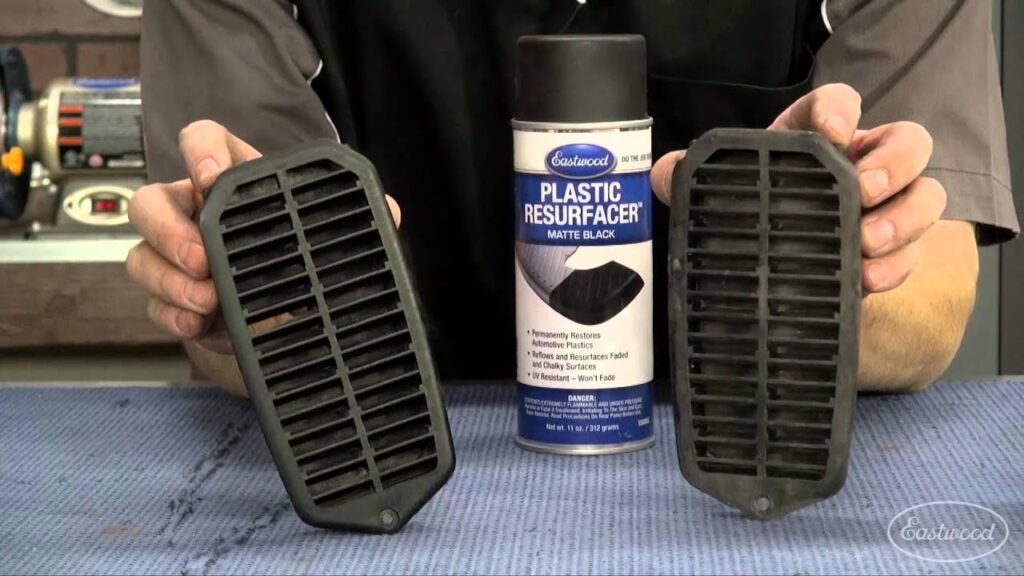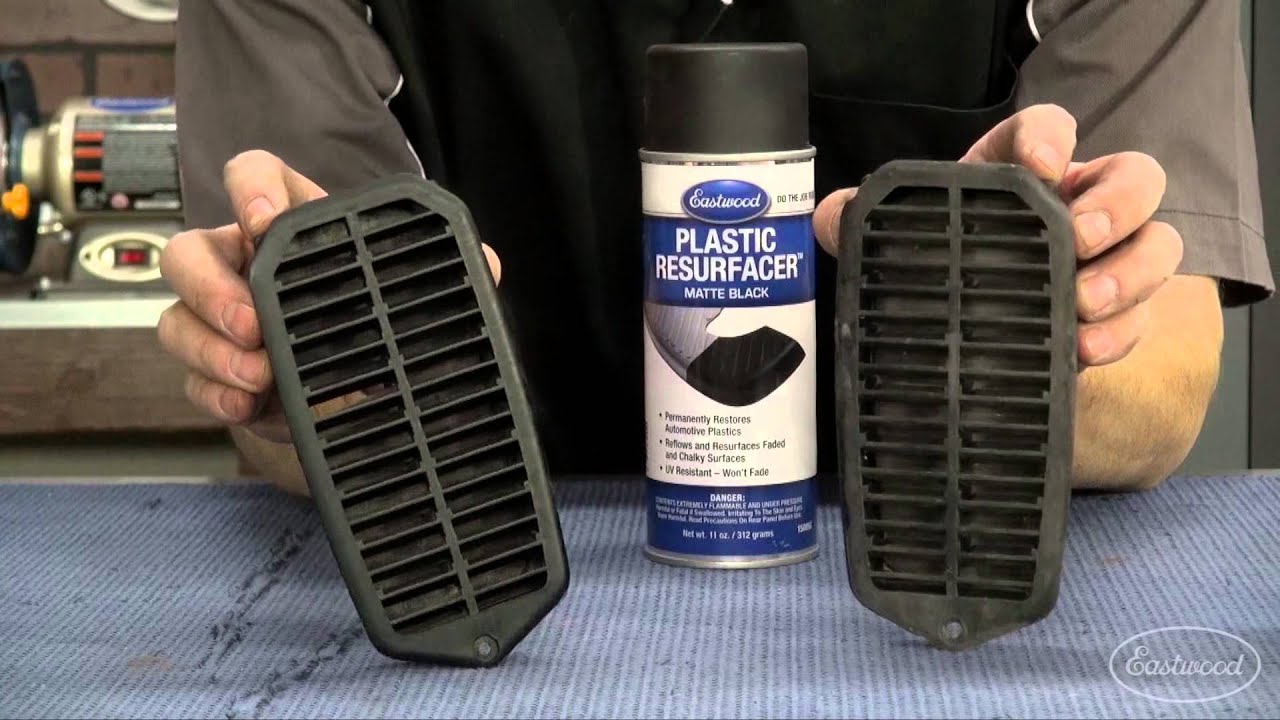
How to Restore Faded Plastic: A Comprehensive Guide
Faded plastic is a common problem that affects everything from car interiors and outdoor furniture to toys and household appliances. Exposure to sunlight, harsh weather conditions, and general wear and tear can cause plastic to lose its original color and luster, leaving it looking dull and unattractive. Fortunately, there are several effective methods to restore faded plastic and bring it back to life. This comprehensive guide will walk you through various techniques, from simple cleaning solutions to more advanced restoration processes, ensuring you can find the best approach for your specific needs.
Understanding Why Plastic Fades
Before diving into the restoration process, it’s crucial to understand why plastic fades in the first place. The primary culprit is ultraviolet (UV) radiation from sunlight. UV rays break down the chemical bonds in the plastic polymer, causing it to degrade and lose its color. This process is known as photodegradation. Other factors contributing to fading include:
- Oxidation: Exposure to oxygen can cause a chemical reaction that alters the plastic’s surface.
- Heat: High temperatures can accelerate the degradation process.
- Pollution: Airborne pollutants can react with the plastic, leading to discoloration.
- Cleaning Products: Some harsh cleaning agents can strip away the plastic’s protective layer, making it more susceptible to fading.
Initial Assessment: Determining the Extent of the Damage
Before you begin any restoration work, take a close look at the faded plastic. Assess the severity of the fading and identify any other damage, such as scratches, cracks, or stains. This will help you choose the most appropriate restoration method. For instance, lightly faded plastic might only require a simple cleaning and polishing, while severely faded plastic may need more intensive treatment.
Simple Cleaning Solutions for Lightly Faded Plastic
For plastic that is only mildly faded, starting with a simple cleaning solution is often the best approach. These solutions are gentle and can effectively remove surface dirt and grime, restoring some of the plastic’s original shine.
Soap and Water
This is the most basic and safest cleaning method. Mix a mild dish soap with warm water, and use a soft cloth or sponge to gently scrub the plastic surface. Rinse thoroughly with clean water and dry with a clean cloth. This method is ideal for removing everyday dirt and grime.
Baking Soda Paste
Baking soda is a mild abrasive that can help remove light stains and discoloration. Mix baking soda with water to form a paste, and apply it to the faded plastic. Gently scrub with a soft cloth or sponge, and rinse thoroughly with clean water. This method is particularly effective for removing stubborn dirt and grime.
Vinegar Solution
Vinegar is a natural cleaning agent that can help remove stains and restore shine. Mix equal parts white vinegar and water, and apply the solution to the faded plastic. Let it sit for a few minutes, then scrub gently with a soft cloth or sponge. Rinse thoroughly with clean water and dry with a clean cloth. Be cautious when using vinegar on certain types of plastic, as it can potentially damage some materials. Always test in an inconspicuous area first.
More Intensive Restoration Methods for Severely Faded Plastic
If simple cleaning solutions are not enough, you may need to use more intensive restoration methods. These methods involve using specialized products and techniques to remove the faded layer of plastic and restore its original color.
Heat Gun Method
Using a heat gun can temporarily restore the color of faded plastic by bringing the oils to the surface. However, this method only provides a temporary fix and can be dangerous if not done correctly. Always use caution and follow these steps:
- Clean the plastic surface thoroughly.
- Set the heat gun to a low setting.
- Hold the heat gun several inches away from the plastic surface and move it slowly and evenly.
- Avoid overheating the plastic, as this can cause it to melt or warp.
- Monitor the plastic closely as you heat it. The color should start to return as the plastic heats up.
- Once the color has been restored, allow the plastic to cool completely.
This method is best suited for rigid plastics and should be used with caution. Always test in an inconspicuous area first. The effect is temporary, and the plastic will likely fade again over time.
Plastic Restorer Products
There are many commercial plastic restorer products available on the market. These products are specifically designed to restore the color and shine of faded plastic. When choosing a plastic restorer, consider the type of plastic you are working with and the severity of the fading. Follow the manufacturer’s instructions carefully, and always test the product in an inconspicuous area first.
Many plastic restorer products contain UV protectants, which can help prevent future fading. Applying a UV protectant after restoring the plastic can help prolong its lifespan and maintain its appearance.
Sanding and Polishing
For severely faded plastic, sanding and polishing may be necessary. This method involves removing the faded outer layer of plastic and then polishing the surface to restore its shine.
- Clean the plastic surface thoroughly.
- Start with a high-grit sandpaper (e.g., 400-grit) and gently sand the faded area.
- Gradually move to finer grits of sandpaper (e.g., 600-grit, 800-grit, 1000-grit) to smooth the surface.
- Use a plastic polish and a soft cloth to polish the surface.
- Apply a UV protectant to help prevent future fading.
This method requires patience and attention to detail, but it can produce excellent results. Be careful not to sand too aggressively, as this can damage the plastic. [See also: How to Polish Plastic Like a Pro]
Painting
If the plastic is too damaged to be restored using other methods, painting may be the best option. This involves applying a fresh coat of paint to the plastic surface, restoring its color and appearance.
- Clean the plastic surface thoroughly.
- Sand the surface lightly to create a smooth, even surface for the paint to adhere to.
- Apply a plastic primer to help the paint bond to the plastic.
- Apply several thin coats of paint, allowing each coat to dry completely before applying the next.
- Apply a clear coat to protect the paint and add shine.
Choose a paint that is specifically designed for plastic, and follow the manufacturer’s instructions carefully. Painting can be a more permanent solution for restoring faded plastic. [See also: Best Paints for Plastic Surfaces]
Preventing Future Fading
Once you have restored your faded plastic, it’s important to take steps to prevent future fading. Here are some tips:
- Protect from Sunlight: The best way to prevent fading is to protect the plastic from direct sunlight. Use covers, shades, or store items indoors when possible.
- Apply UV Protectant: Regularly apply a UV protectant to the plastic surface. This will help block UV rays and prevent them from damaging the plastic.
- Regular Cleaning: Clean the plastic regularly to remove dirt and grime. This will help prevent discoloration and maintain its appearance.
- Avoid Harsh Chemicals: Avoid using harsh cleaning chemicals that can strip away the plastic’s protective layer.
Choosing the Right Method for Your Needs
The best method for restoring faded plastic depends on the type of plastic, the severity of the fading, and your personal preferences. Start with the simplest methods first, and gradually move to more intensive methods if necessary. Always test any cleaning or restoration product in an inconspicuous area first to ensure it doesn’t damage the plastic.
Restoring faded plastic is a worthwhile endeavor that can save you money and extend the life of your belongings. Whether you’re dealing with faded car parts, outdoor furniture, or household items, with the right techniques and products, you can bring them back to their former glory. By understanding the causes of fading and taking preventative measures, you can keep your plastic items looking their best for years to come. Successfully restore faded plastic today!
By following these steps, you can effectively restore faded plastic and keep it looking its best. Remember to always prioritize safety and test any new products or methods in an inconspicuous area first. With a little patience and effort, you can bring your faded plastic items back to life and enjoy them for years to come. Don’t let faded plastic ruin the look of your belongings – take action and restore faded plastic today!
Remember that consistency is key when it comes to maintaining the appearance of your plastic items. Regular cleaning and the application of UV protectants will go a long way in preventing future fading and keeping your items looking their best. With the right care and attention, you can enjoy your plastic items for years to come. So, take the time to restore faded plastic and protect it from further damage – you’ll be glad you did!
In conclusion, restoring faded plastic is a manageable task with the right knowledge and tools. From simple cleaning solutions to more advanced restoration techniques, there are various methods available to revive your faded plastic items. By understanding the causes of fading, choosing the appropriate restoration method, and taking preventative measures, you can effectively restore faded plastic and keep it looking its best. So, don’t let faded plastic detract from the appearance of your belongings – take the initiative to restore faded plastic and enjoy the renewed look of your items. The steps to restore faded plastic are easier than you think.
Ultimately, the goal is to restore faded plastic to its original state or as close to it as possible. With dedication and the right approach, you can achieve impressive results and prolong the life of your plastic items. So, embrace the challenge, gather your supplies, and restore faded plastic to enhance the look and longevity of your belongings. Remember, regular maintenance is key to preventing future fading, so make it a habit to clean and protect your plastic items regularly. Restore faded plastic today and enjoy the benefits of revitalized belongings!

